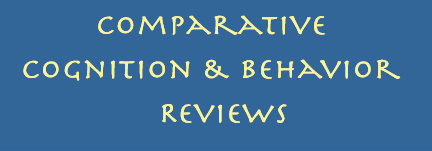 |
||
|
2013
|
Volume 8:78-97 |
|
|
|
|
|
|
|
|
|
|
|
Two Fields Are Better Than One: Developmental and Comparative Perspectives On Understanding Spatial Reorientation
Alexandra D. Twyman
University of Western Ontario
Daniele Nardi
Sapienza University
Nora S. Newcombe
Temple University
Occasionally, we lose track of our position in the world, and must re-establish where we are located in order to function. This process has been termed the ability to reorient and was first studied by Ken Cheng in 1986. Reorientation research has revealed some powerful cross-species commonalities. It has also engaged the question of human uniqueness because it has been claimed that human adults reorient differently from other species, or from young human children, in a fashion grounded in the distinctive combinatorial power of human language. In this chapter, we consider the phenomenon of reorientation in comparative perspective, both to evaluate specific claims regarding commonalities and differences in spatial navigation, and also to illustrate, more generally, how comparative cognition research and research in human cognitive development have deep mutual relevance. |
• Full-text PDF |
|
Published by the Comparative Cognition Society
How to reference this article:
Twyman, A.D., Nardi, D., Newcombe, N.S. (2013). Two Fields Are Better Than One: Developmental and Comparative Perspectives On Understanding Spatial Reorientation. Comparative Cognition & Behavior Reviews, 8, 78-97. Retrieved from http://comparative-cognition-and-behavior-reviews.org/index.html doi:10.3819/ccbr.2013.80005